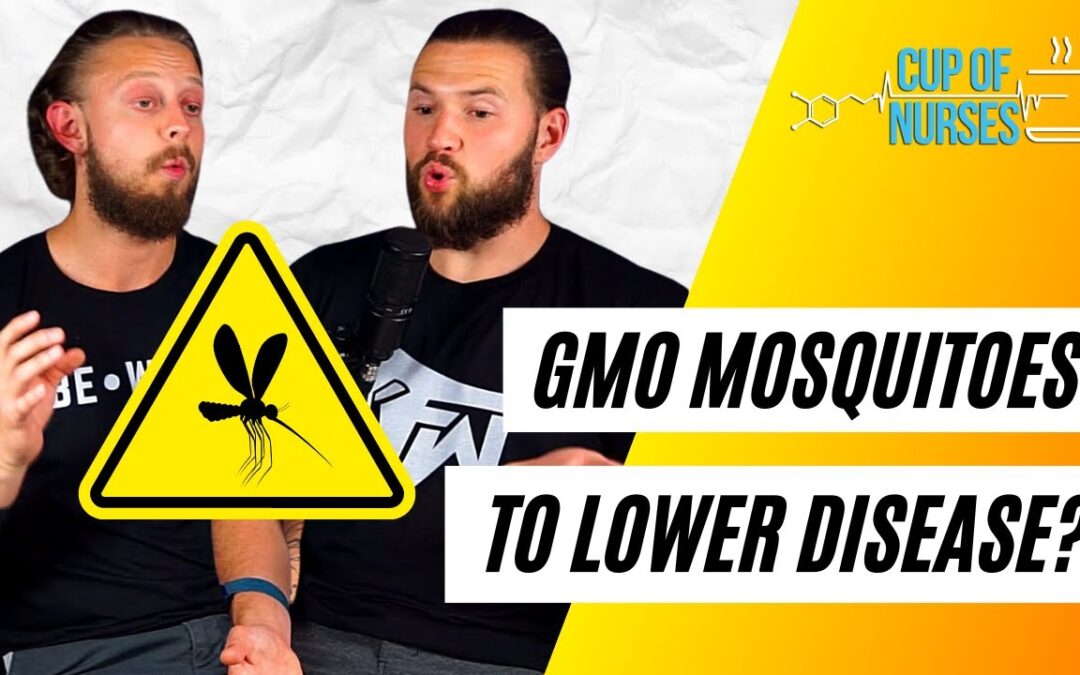
GMO Mosquitoes and How the Gut Microbiome Influences Blood Pressure
GMO Mosquitoes and How the Gut Microbiome Influences Blood Pressure
GMO Mosquitoes
Genetically modified or GMO mosquitoes have hit the keys. A company called Oxitec has genetically modified mosquitos and is releasing them for the first time in Florida. They genetically modified a specific type of mosquito, the Aedes mosquito.
There are many types of mosquitoes, so why did they specifically target the Aedes? This specific mosquito accounts for 4% of all mosquitoes in the district, but the Aedes are responsible for most of the disease spread.
The Aedes mosquito has been shown to carry certain diseases such as dengue, yellow fever, chikungunya, zika, and lymphatic filariasis.
How Will It Work
The male GMO mosquitoes are supposed to reduce or control the size of the population. The current Oxitec method targets female mosquitoes because only the female mosquito bites for blood, which she needs to mature her eggs [1].
Males feed only on nectar and do not bite people, so they are not a carrier of the disease. Oxitec’s model is to genetically alter a lethal gene to only kill females in the larval stage of growth. Ideally, the female mosquitos should die prior to hatching.
This gene altercation is done on males because the “kill switch” gene only affects females. The goal of this is to have the male GMO mosquitoes reproduce with females leading to the death of female offspring.
Boxes with GMO mosquito eggs, food, and water have been placed in 6 locations in the lower and middle keys. Through these locations, 12,000 mosquitos will grow each week for about 12 weeks [2].
Thoughts
There is a regulatory structure for how we bring new projects to reality. There are 4 pillars a project must explain before approval from a regulatory body
- Public health: Is there a need?
- Regulatory: May it be done?
- Social: Should it be done?
- Scientific: Can it be done?
This is the framework for a novel technology to be adapted.
A segment of Keys residents is worried about how this may affect the environment. The EPA, FDA, and The Florida Department of Agriculture and Consumer Services all approved this trial. There are however still unknown.
How will this affect the environment is a question no one has the answer to because there has not been enough research on its effects. This can potentially have a ripple effect, by altering one organism it has the potential to alter others.
Just because the male mosquitos are shown to not bite humans doesn’t mean they can’t affect us another way. It can alter the way other species eat mosquitos, we aren’t sure how it will affect the growth of other animals that use mosquitos as fuel [3].
Gut Microbiome and Hypertension
One of the still most unexplored parts of our body is our gut microbiome. New research suggests certain gut bacteria may be linked to high blood pressure. This is newer research that has a lot of potential but there still has to be a lot of work done around it.
Nearly half of the adults in the US have hypertension and 20% of people do not find success in managing blood pressure with current pharmaceuticals.
Gut Dysbiosis Linked to Hypertension
Emerging evidence suggests that gut microbiota is critical in the maintenance of physiological homeostasis.
This study was designed to test the hypothesis that dysbiosis in gut microbiota is associated with hypertension. It is because genetic, environmental, and dietary factors profoundly influence both gut microbiota and blood pressure.
Bacterial DNA from fecal samples of 2 rat models of hypertension and a small cohort of patients was used for bacterial genomic analysis [4].
We observed a significant decrease in microbial richness, diversity, and evenness in the spontaneously hypertensive rat, in addition to an increased Firmicutes/Bacteroidetes ratio.
(1) Decreases in the microbial richness and marked increases in the F/B ratio in the animal models of hypertension, implicating the existence of gut dysbiosis in hypertension.
(2) This dysbiosis was associated with decreases in acetate- and butyrate-producing bacteria and an increase in the lactate-producing bacterial population
(3) Gut microbiota dysbiosis was confirmed in a small cohort of human hypertensive patients, pointing to the potential clinical significance of this work
(4) Oral minocycline could rebalance the gut microbiota in a rat model of hypertension. These findings clearly implicate the role of gut microbiota in the pathophysiology of both animal and human hypertension.”
These observations demonstrate that high blood pressure is associated with gut microbiota dysbiosis, both in animal and human hypertension. They suggest that dietary intervention to correct gut microbiota could be an innovative nutritional therapeutic strategy for hypertension.
Intermittent Fasting and the Way it Reshapes the Gut to Lower Blood Pressure
Germ-free rats received microbiota from fasting rats as well as another sample that received microbiota from rats with higher blood pressure. The rats that received the microbiota from the fasted rats exhibited lower blood pressure.
Researchers also observed that bile acid production was a potential mediator for blood pressure. Supporting this finding, they found that supplementing animals with cholic acid, a primary bile acid, also significantly reduced blood pressure.
“Many of the bacteria in the gut microbiota are involved in the production of compounds that have been shown to have beneficial effects as they make it into the circulation and contribute to the regulation of the host’s physiology” [5].
Association Between the Gut Microbiota and Blood Pressure
They studied a population sample of 6953 Finns aged 25 to 74 years. The participants underwent a health examination, which included BP measurement, stool collection, and 24‐hour urine sampling [6].
They concluded the associations between overall gut taxonomic composition and BP are weak. Individuals with hypertension demonstrate changes in several genera.
We demonstrate strong negative associations of certain Lactobacillus species with sodium intake and BP, highlighting the need for experimental studies.
Much research still has to be done but there is a growing importance of the gut microbiome. There can potentially be a link between the way we process and metabolize medication, meaning we can have the potential to tailor antihypertensives to individual people.
This also shows how important nutrition is to our bodies. What you take in shapes your gut; poor nutrition leads to poor gut health leading to hypertension.
Learn more about the GMO mosquitoes and how the gut biome affects hypertension here 👇
TIMESTAMPS:
00:00 – Intro and welcome to the show
00:35 – Episode Intro
01:42 – Changing the DNA of Mosquitoes
03:50 – A Ripple Effect
05:27 – How it’s done
06:33 – How Gut Biome affects blood pressure
08:26 – The Gut is Overlooked
09:42 – Gut as a “society”
10:51 – The food you consume affects your gut flora
11:16 – Matt’s story
12:44 – The Vibration Theory
13:04 – Intermittent Fasting and How it Affects Gut Flora
15:55 – GI Doctor talk about gut health
17:23 – Wrapping up the episode





Recent Comments